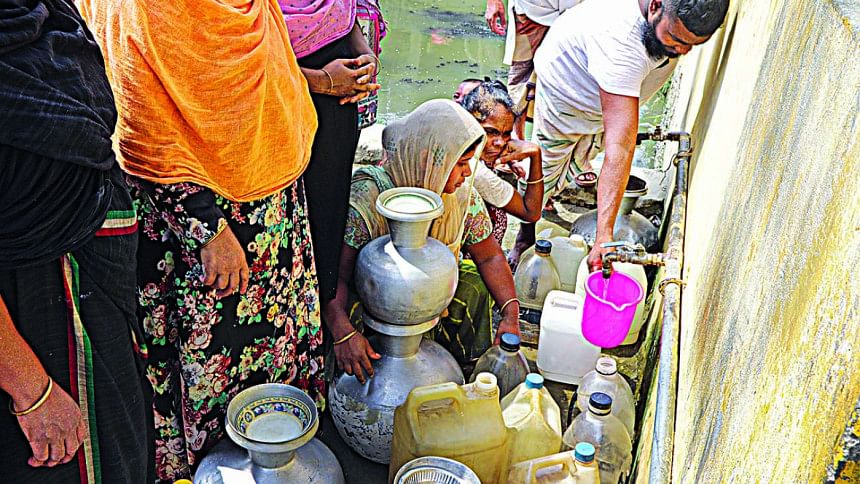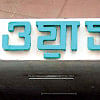WASA Supply in Capital: 16pc water not clean

A month after boasting about its water quality, Dhaka Wasa yesterday revealed that its water is polluted in 57 city areas because of broken-down supply lines.
The official water supplier in the city made the admission in a report submitted before the High Court.
The local government and rural development ministry submitted the report on behalf of Wasa, as per the court’s order on Monday.
The Wasa sent the report, based on consumers’ allegations, to the ministry the same day.
The report said the Wasa would test the water of those areas at the laboratories of Dhaka University, Buet, and icddr,b.

The development comes less than a month after Wasa Managing Director Taqsem A Khan claimed that Wasa water “is 100 percent pure,” while also admitting that sometimes he himself boils the water at his home.
Wasa has since been under pressure form the public, the media and the High Court.
After receiving the report, the HC bench of Justice JBM Hassan and Justice Md Khairul Alam asked Prof Sabita Rizwana Rahman, head of Dhaka University’s microbiology department, to appear before the court on May 21 to give her expert opinion on how to test Wasa water easily.
“It is the duty of the Wasa managing director to supply pure water to people’s homes,” the court said, in response to a petition filed last year.
The HC is expected to issue further orders on the matter on May 21.
Contacted yesterday, the Wasa MD claimed their water was “100 percent pure” at source, but some 16 percent of it gets contaminated inside the supply lines that are in bad shape at many places.
Asked about his earlier claim about the quality of Wasa water, he said it was a mistake to say that Wasa water was completely safe and pure from source to consumers’ homes.
With 3.74 lakh connections in its 360sqkm service area in Dhaka city and Narayanganj, Wasa supplies 240 crore litres of water daily. Of this, 22 percent is surface water taken from rivers and treated and the rest is extracted from underground with 900 deep tube wells.
This water is brought to city dwellers’ homes through a network of 60,000km supply lines -- 36,000km of which are derelict 150-year-old pipes. So far, some 24,000km of the network has been replaced, officials said.
City dwellers have long complained that the worn-out Wasa supply lines are responsible for rampant water contamination in different areas.

Asked about their latest report, the Wasa MD said the list was prepared based on “isolated” complaints from households.
A random sample test last year showed 40 percent water gets contaminated after reaching private reservoirs, he said.
“It is not that water in an entire area is contaminated. Rather, only a handful of consumers in an area complain of contamination,” he said, adding that they were working to replace the run-down supply lines in phases.
Earlier on April 17, the Transparency International Bangladesh published its year-long study, which found that 91 percent Wasa subscribers have to boil the supply water to make it drinkable and, in the process, they burn gas worth Tk 332 crore a year.
Its findings also show that nearly 45 percent subscribers do not get the desired amount of water while about 35 percent complain of poor-quality water throughout the year.
On April 20, the Wasa MD had publicly challenged the report, saying the TIB claims were unfounded.
But when some Old Dhaka residents took position in his office the next day and demanded that he drink the supply water, he refused to do so.
Meanwhile, the LGRD ministry submitted a report to the HC on May 8, saying it formed a four-member committee to test Wasa water.
The court ordered the ministry to form such a committee in November last year, following a writ petition.
The petition was filed in October last year after The Daily Star ran a report on the quality of Wasa water.
The report, based on a World Bank study, said E. coli contamination was found in 80 percent of the household tap water across the country.

 For all latest news, follow The Daily Star's Google News channel.
For all latest news, follow The Daily Star's Google News channel. 








Comments